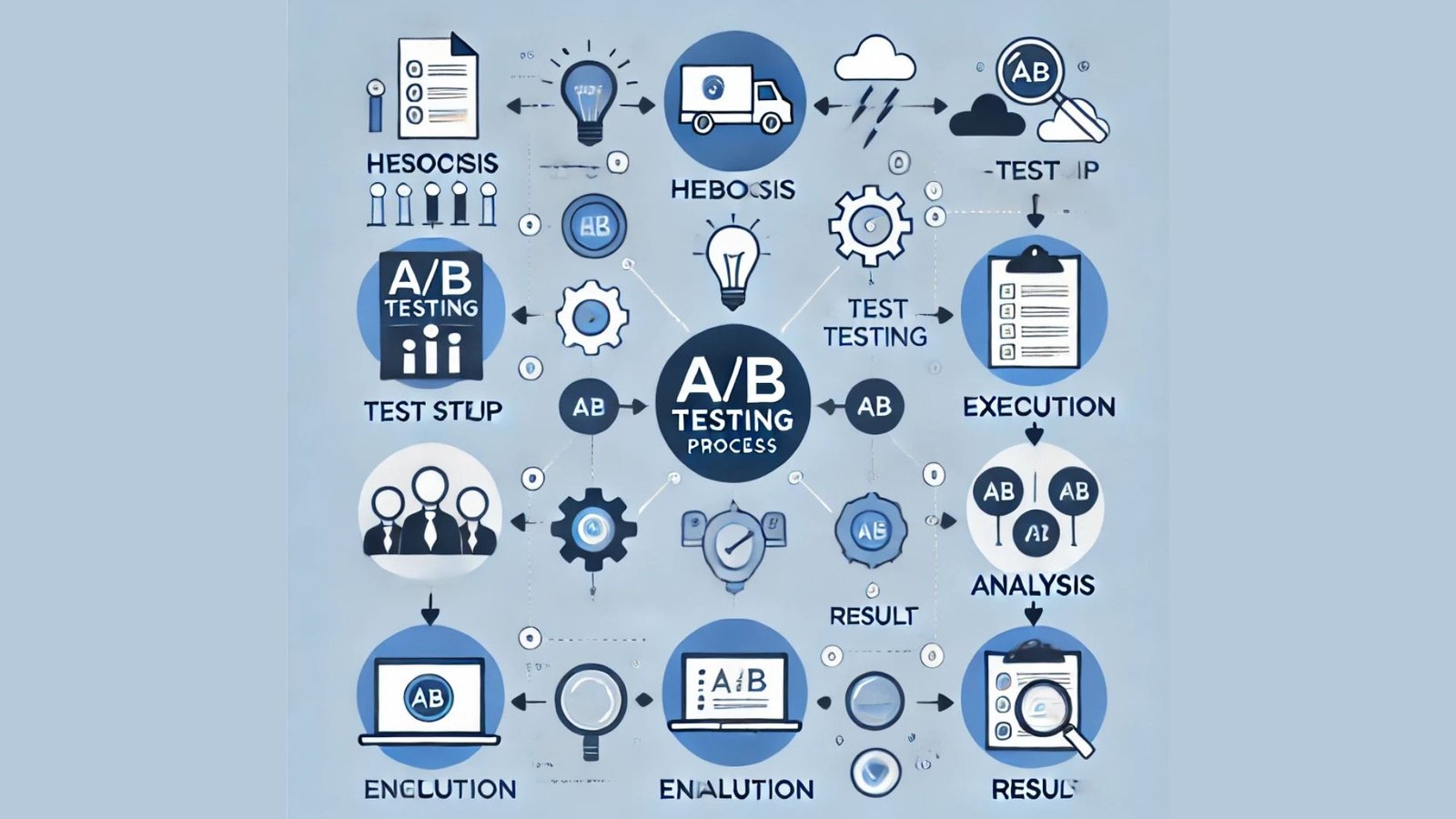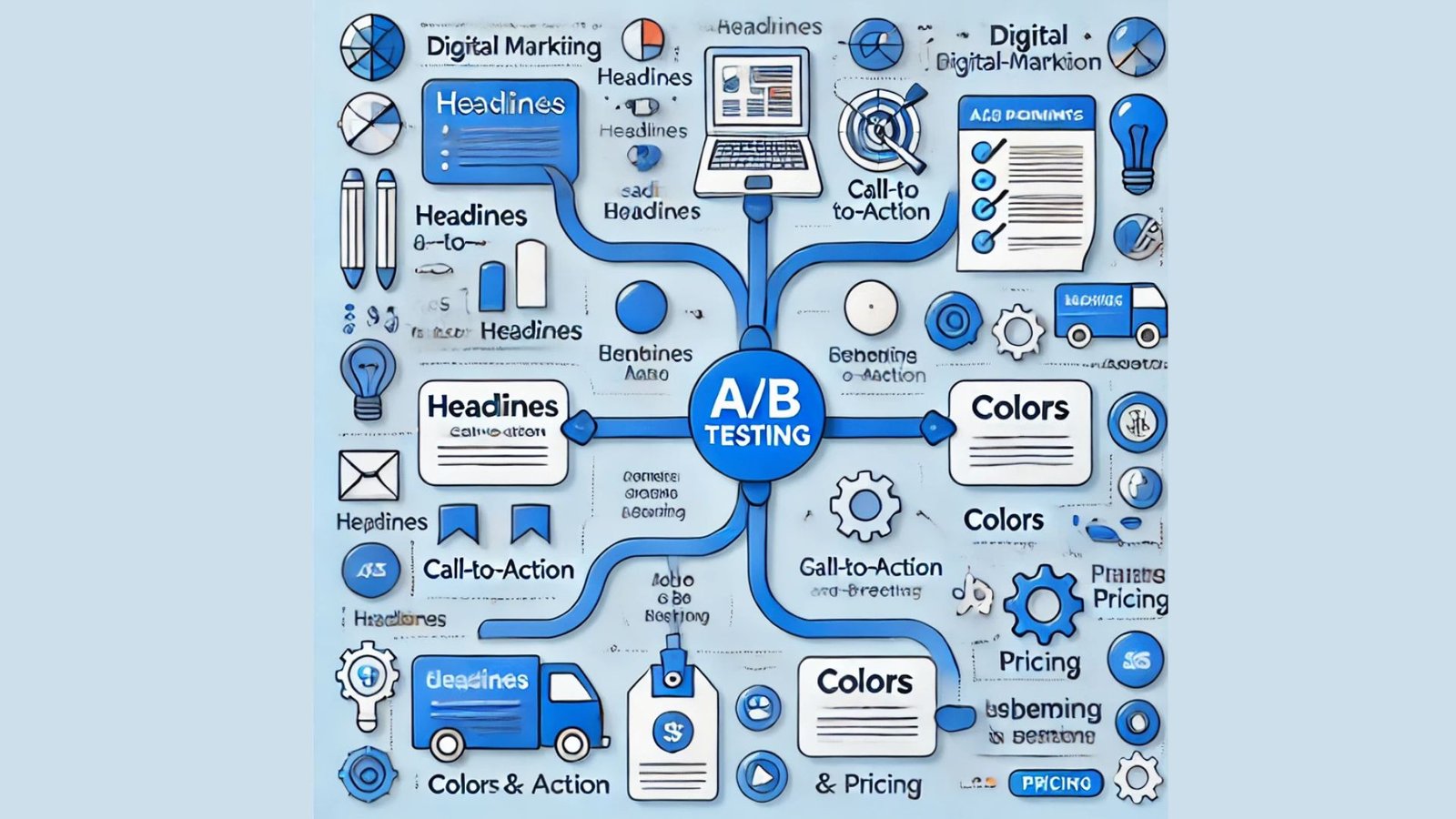A/B Testing to Get Better Marketing Outcomes

Imagine you’re running an online store, and you’ve been using the same product page for months. Sales are decent, but could a minor tweak improve conversions? Instead of guessing, you run an A/B test. One group sees your current page, while another sees a version with a different headline and call to action. A week later, you check the results, and the new version outperforms the old one by 25%!That’s the power of A/B testing—small changes can lead to significant results. But how do you do it effectively?
What is A/B Testing?
A/B testing is a simple technique for contrasting two versions of an item to determine which works better. It’s commonly used in marketing to test emails, ads, websites, and pricing strategies. The goal? Improve outcomes—whether that’s more clicks, sign-ups, or sales.
Why Does A/B Testing Matter?

Marketing is part science, part psychology. Sometimes, what you think will work best isn’t actually what gets the best response. A/B testing removes the guesswork and lets actual user behaviour decide.
- A: “Exclusive Discount Just for You!”
- B: “Get 20% Off—Today Only!”
After emailing thousands of subscribers, they find that Option B gets 30% more opens. Without testing, they might have stuck with the first subject line and lost out on sales.
How to Run an A/B Test the Right Way
A successful test follows a straightforward process. Here’s how to do it properly:
Identify What to Test
Start with one thing at a time. Testing too many changes simultaneously makes it hard to know what caused the difference. Here are a few things you can test:
- Headlines or titles
- Call-to-action buttons
- Email subject lines
- Ad copy
- Page layouts
- Pricing structures
Set a Clear Goal
What do you want to improve? It could be:
- More website clicks
- Higher email open rates
- More sales
- Longer time spent on a page
For example, if you’re testing a call-to-action button, the goal might be to increase clicks.
Split Your Audience Fairly
Your audience should be randomly divided into two groups. One sees Version A, and the other sees Version B. Keep all other factors the same to ensure a fair test.
Collect Enough Data
Testing for a few hours or with a small sample won’t yield reliable results. The larger the sample size, the better the accuracy.
Analyze the Results
Did Version B get more clicks than Version A? If so, it’s a winner. If the difference is slight, you might need more tests to confirm.
Real-Life Example: A Business Boosts Sales with a Simple Change
A small online bakery noticed their website visitors were adding items to their cart but not completing the purchase. Instead of assuming the checkout process was too complicated, they ran an A/B test.
- Version A: The current checkout page.
- Version B: The same checkout page, but with a small note saying, “Orders placed before 3 PM ship the same day!”
After two weeks, they found that Version B increased completed orders by 18%! A tiny change—just one sentence—led to a significant improvement in sales.
A/B Testing Mistakes to Avoid
Even though A/B testing is simple, there are common mistakes marketers make:
Testing Without a Hypothesis
A random test without a reason won’t teach you much. Before testing, have a theory about why a change might work better.
Ending the Test Too Soon
It’s tempting to call a winner after seeing early results, but you need to let the test run long enough to be statistically valid.
Ignoring Small Gains
Even a 5% improvement can mean significant revenue over time. Small changes add up.
Practical Tips for Better A/B Testing

Want better results? Keep these in mind:
- Use contrasting options. If you’re testing a headline, don’t change just one word—make it a noticeable difference.
- Think like your audience. Would you click that ad or open that email?
- Test continuously. Even if something works well, there’s always room for improvement.
- Learn from others. Look at case studies and success stories from other businesses.
Marketing is a constant experiment. The best businesses aren’t just making guesses—they’re testing, learning, and improving. Whether running an email campaign, designing a website, or optimizing ads, A/B testing is a powerful way to get better results.
FAQs
1.What is A/B testing in marketing?
A/B testing compares two versions of an element (like a webpage, ad, or email) to see which performs better.
2.How long should an A/B test run?
Ideally, at least one to two weeks, depending on traffic, to collect enough data for reliable results.
3.What can I test with A/B testing?
You can test headlines, call-to-action buttons, images, email subject lines, page layouts, and more.
4.How do I know if my A/B test is successful?
If the test version significantly improves conversions or engagement compared to the original.
5.Should I run multiple A/B tests at once?
It's best to test one element at a time to avoid mixed results.
- Formazione
- Course
- Books
- Drawing
- Question
- Film
- Fitness
- Food
- Giochi
- Gardening
- Health
- Home
- Literature
- Music
- Networking
- Altre informazioni
- Programming
- Religion
- Shopping
- Sports
- Curriculm
- Wellness


